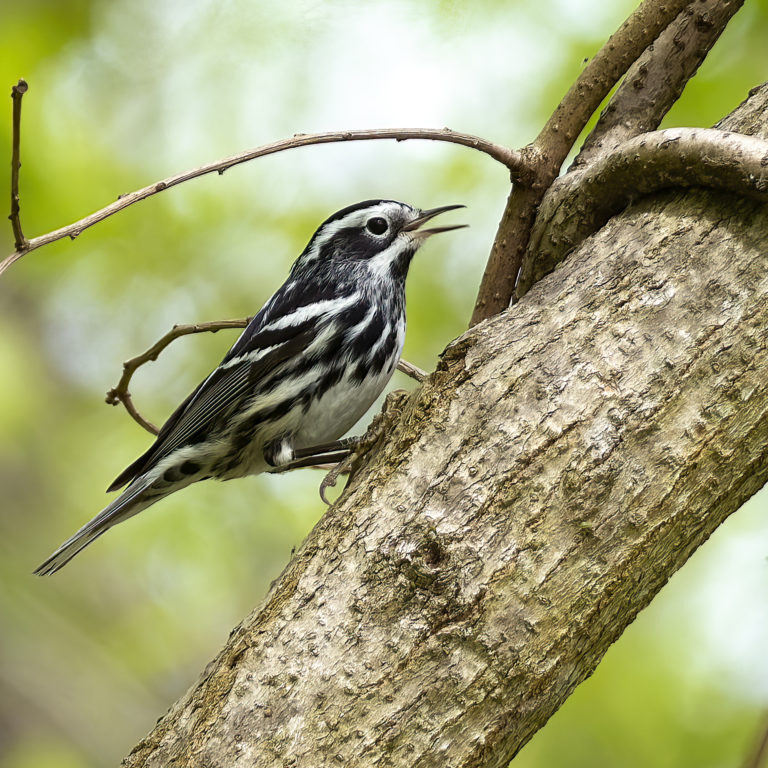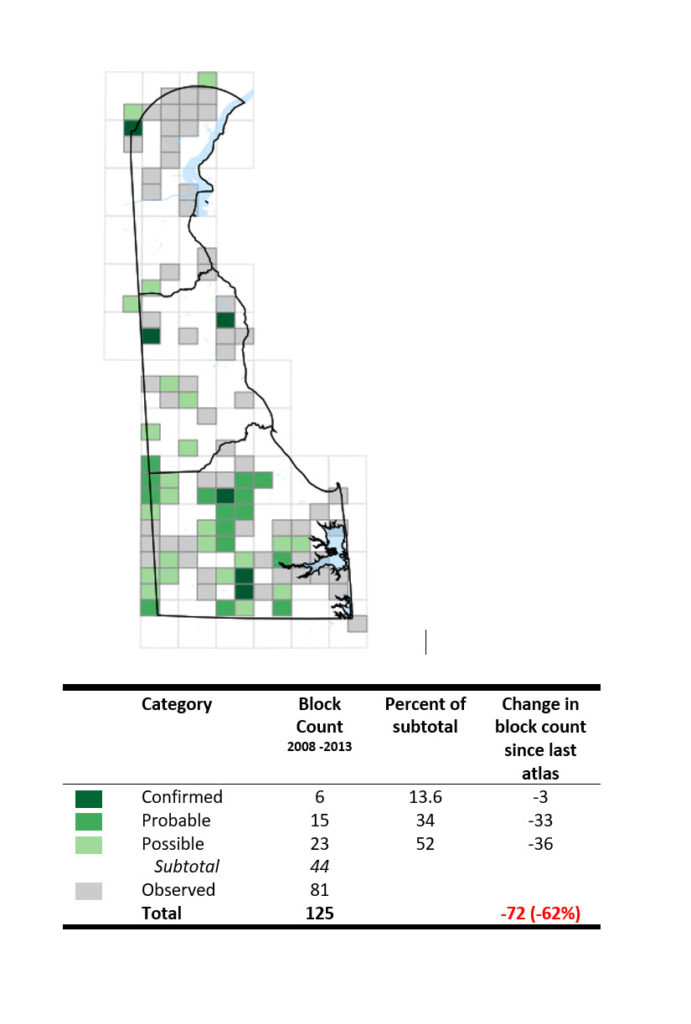
Black-and-White Warbler
(Mniotilta varia)
Christopher M. Heckscher


Species Account
This striking warbler of deep forest is often under-appreciated due to its more colorful forest companions. Contrasting with the green leaves and blue-grey lichens in which it diligently probes for invertebrates, the Black and White Warbler hunts in a nuthatch-like fashion as it works its way up and down tree trunks and limbs. The characteristic high-pitched “squeaky wheel” song can sometimes be missed by even the sharpest of birder ears. Unfortunately, the species is highly sensitive to forest loss and fragmentation and is now primarily restricted to only the largest of Delaware’s remaining forest fragments. It is among our fastest disappearing woodland warblers.
Distribution and Habitat - Although it is widespread, the Black-and-white Warbler is uncommon in Delaware especially in Kent and New Castle Counties. It was reported in 44 atlas blocks during safe dates but confirmed in only six blocks representing 13.6% of the total blocks in which it was found. Although the species breeds in both physiographic provinces, it is more common in Sussex County where it was reported during safe dates, or otherwise observed, in more than 50% of blocks. The species is usually associated with second-growth to mature mixed hardwood forests but also can be found in forests with a prominent pine component (e.g., Guilfoyle and Rohwer 1994). This warbler is forest-dependent; therefore, it is usually found only in larger forest fragments. The species’ affinity with large forests limits its distribution in Delaware and is likely responsible for the apparent absence of the species from large areas of Kent and New Castle counties (see Robbins et al. 1989).
The Black and white Warbler nests on the ground. During the current atlas period, one nest was found at White Clay Creek State Park on 13 May 2009 by CMH. Only two additional Delaware nests have been reported – one in 1929 (Hess et al. 2000) and another in the late 1990s from the Great Cypress Swamp (EFZ). Difficulty locating nests was likely a contributing factor to the species’ low number of confirmed blocks during the atlas period.
Breeding phenology - The Black-and-white Warbler is a harbinger of spring as it is among our earliest Nearctic-Neotropical migrants to return from wintering grounds in Florida and Central and South America. Typically, resident birds appear early in the third week of April (Hess et al. 2000) and nest building commences soon thereafter. Active nests have been found 7 May (Hess et al. 2000) and 13 May (see above).
Change since first atlas - The species was found in 52% of blocks during the first atlas period compared to just 19.8% during the current period. This drastic change (-62% change in block count) is corroborated by regional data showing steep declines in surrounding states especially on the Coastal Plain (Ellison 2010; Wilson et al. 2012).
Conservation - Overall, the species is uncommon and appears to be declining in Delaware. However, it may remain locally common in some larger forested areas. In Delaware’s largest contiguous forest, the Great Cypress Swamp, the Black-and-white Warbler was the seventh most abundant warbler from among 14 breeding warbler species (Heckscher 2004). The Black-and-white Warbler is considered a Delaware species of concern by DNREC and has a high PIF ranking.
The future of this species in Delaware appears to be grim. Protection and proper management of known populations should be a priority. As with all forest-dependent species, conservation to prolong its existence in Delaware will require the protection and expansion of existing large forested areas known to be occupied. According to atlas data, five forested areas should be focal starting points from which land protection could be expanded: White Clay Creek State Park, Blackbird-Millington corridor, Ellendale-Redden State Forests, Marshyhope and Nanticoke Wildlife Areas, and Great Cypress Swamp Conservation Area. Preservation and the minimization of fragmentation of remaining forest fragments in the surrounding Delaware landscape, especially in central Sussex County, will be an important component to any long-term conservation plan for the Black-and-white Warbler in Delaware.
